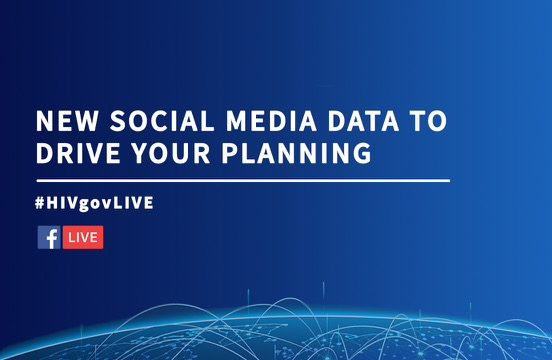Save the Date: New Social Media Data to Drive Your Planning (Facebook Live)

According to new data published from the Pew Research Center,Exit Disclaimer Facebook continues to be the most widely-used social media platform with 68% of U.S. adults as users. However, new data in this year’s report show that 18 to 24 year-olds are embracing a variety of platforms, including Snapchat (78% of young adults are users) and Instagram (71%). This research is important for HIV communications because, if public health professionals understand how their audiences use social media, they will also understand how to use this data to target efforts to meet their stakeholders or client’s program or health needs.
We’ll be discussing the new data and how you can apply it to your program live via a Facebook Live event on March 20th at 11 am ET. Discussion panelists include:
Lee Rainie (Director, Internet and Technology, Pew Research)
Stacey Palosky (Acting Deputy Director, Digital at U.S. Department of Health and Human Services)
Miguel Gomez (Director, HIV.gov)
Using data to inform your outreach strategy is one of the best ways to ensure your communications are effective. Panelists will discuss the new Pew research report data and its implications, including:
How different segments of the American population use social media
The profile of smartphone dependent individuals
How the findings can be used to build or modify your communication strategy.
Examples of how HIV.gov and other HHS programs have used data and research to drive their outreach strategies
“As communicators, we need to do more than understand which channels we can use to reach our audiences. We need to understand why individuals visit different social media sites and the unique characteristics of each platform, including: what content performs bests, which formats are most engaging, how the audience expects to interact with us, and how we can best contribute to the conversation. To do understand these channels, we need to listen - listen to our audiences, and listen to the data,” Erin Norvell, HIV.gov Digital Strategist.
How to Watch
Watch the discussion live via Facebook.com/HIVgovExit Disclaimer
Follow along on Twitter using the hashtag #HIVgovLIVE